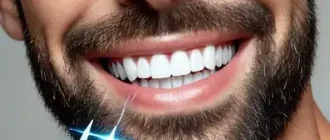The white diet is designed to protect tooth enamel from staining after whitening in the dental office. Even a well-done whitening procedure is not without consequences for the enamel, and for a while it will be particularly vulnerable to staining and irritants. If the recommendations are ignored, time and money are wasted. Moreover, the enamel can be damaged by brushing, and you will not have to think about whitening, but about the treatment of teeth. The diet includes only foods without dyes, whether artificial or natural.
See also: How to Whiten Teeth at Home
What is a white diet?
A white diet is a recommended diet shown to every patient who has undergone a course of whitening. As a rule, it includes special foods that allow you to consolidate the effect after the procedure, as well as prevent the appearance of unsightly stains on the enamel
Important! If you do not follow a white diet, the patient risks getting stained tooth enamel. So, even consuming borage, coffee, black/green tea or carrots, can be a serious obstacle to getting a healthy and beautiful smile. All because these foods can stain your teeth, after which it will simply be impossible to restore them for a long time.
Good to know: Advantages and Disadvantages of Teeth Whitening
Who should follow the white diet?
A white diet is shown to both teenagers and adults who have undergone a whitening course in the clinic or at home. As a rule, it is compiled by the dentist himself or the patient, based on his personal taste preferences. At the same time, the requirement is always the same – you just need to follow the basic rules, according to which the enamel will be reliably protected from external aggressive factors.
Read also about Professional Teeth Whitening at the Dentist
What can a diet include?
Contrary to what most people think, the white diet carries exceptional benefits, and it can be not only healthy, but also tasty. The only point is that almost all of its products will turn out to be caloric, however, with the right combination of food, your body will benefit from it exceptionally.
In the process of following a white diet, you should take a closer look not only at bread, potatoes and pasta, but also at other, more healthy foods: white meat/fish; eggs (consider only the protein); cereals (white rice, barley and oatmeal); white beans; Greek yogurt; soft cheese; butter; light vegetables/fruits/berries, etc. The main rule to operate with is the need to choose exclusively white foods that do not contain bright colors or dyes at all.
See also: Do Teeth Whitening Strips Work?
How long should I follow a white diet?
Depending on the type of whitening and the condition of the enamel, the dentist may recommend following a white diet of 1 to 4 weeks. In rare cases, it may exceed one month. Usually doctors recommend following it for 2 weeks and gradually introducing other products, but you should not switch to beets and other bright products right away. All because their pigments can be a negative factor for your teeth, after which the enamel will instantly stain “spots”. In the latter case, only whitening can help, which is only possible after a few months.






